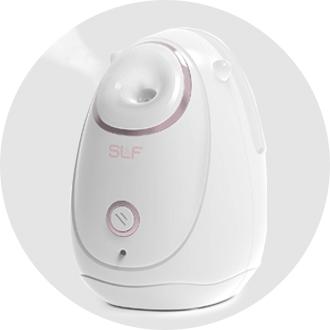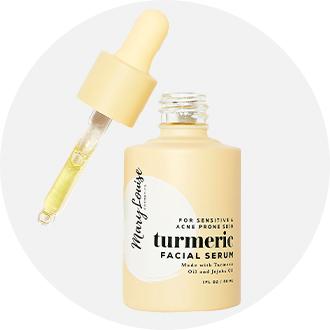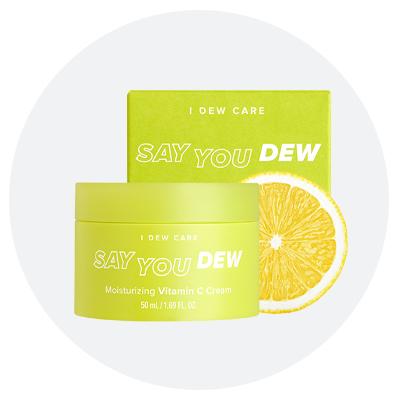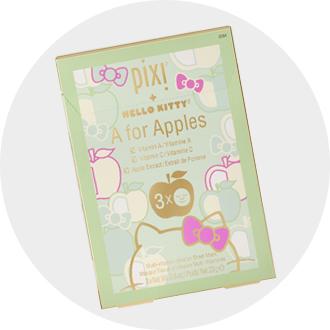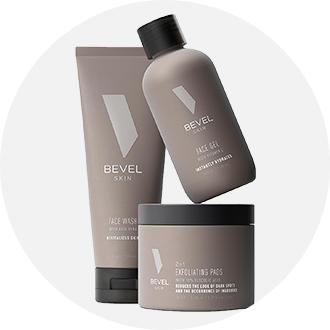Skincare Ingredients
AHA (Alpha Hydroxy Acids)
A group of natural acids used in skin care to exfoliate skin by loosening the glue that holds dead skin cells together and accelerating cell turnover and absorption. Examples of AHAs are glycolic acid and lactic acid.
Aloe
A polysaccharide-rich gel that comes from the leaf of the aloe plant used in skin care to moisturize and soothe skin and may help reduce the appearance of fine lines, wrinkles, scars and stretch marks as well as reducing inflammation from sun exposure.
Aluminum Free
Skincare and makeup products that are free of aluminum-containing compounds and materials. In skincare, aluminum is most often found in deodorants.
Antioxidants
Substances such as vitamins, plants, minerals and enzymes that help prevent damage, typically used as a cream or serum to help keep the skin looking youthful.
Bakuchiol
A substance extracted from the seeds and leaves of the babchi plant used to renew collagen and improve skin tone and texture. A plant-derived alternative to Retinol.
BHA (Beta Hydroxy Acids)
A category of gentle acids that has exfoliating properties that can penetrate deep into pores to attack dirt, oil and bacteria, making them ideal for acne-prone and oily skin. Salicylic acid is the most common form.
CBD (Cannabidiol)
One of the many molecules of Hemp that can be infused into skincare properties with no psychoactive effects.
Ceramides
Long chains of fats naturally found in skin’s outermost layers that are essential for retaining water and maintaining a healthy skin barrier.
Cica
An antioxidant-rich ingredient made from a leafy green herb rich in fatty acids, vitamins and amino acids used for sensitive skin and to soothe redness and irritation.
Collagen
The main protein supporting skin structure and plays a part in elasticity and hydration. As the most abundant protein in your body it rapidly decreases with age.
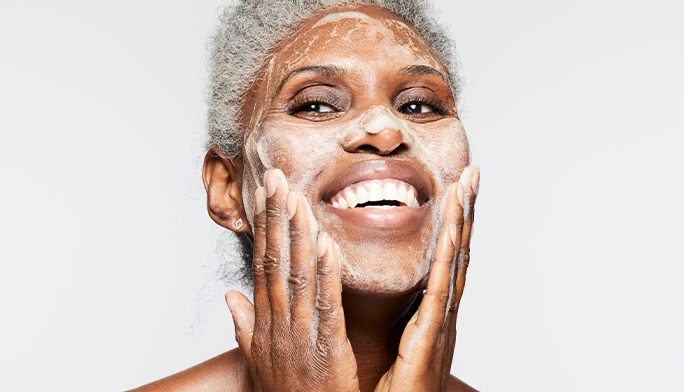
Cruelty Free
A product and its ingredients that are not tested on animals.
Fragrance Free
A product that does not contain fragrance materials or masking scents.
Glycolic Acid
A natural derivative of sugar cane used in various skin care products to pull moisture into the skin. It is a type of AHA that is commonly used for skin exfoliation.
Hyaluronic Acid
A naturally present water-loving compound designed to battle dryness and improve skin texture and elasticity.
Lactic Acid
A water-soluble alpha hydroxy acid (AHA) derived from a variety of sources, including sour milk, commonly used for skin exfoliation and hydration.
Minerals
Substances found in the earth and in your body. In skincare, minerals may be used to give a product pigment or sun protection.
Niacinamide
A water-soluble vitamin derived from Vitamin B3 that helps repair skin damage and rebuild its protective barrier.

Noncomedogenic
Skincare products or cosmetics specially formulated to prevent blocked pores.
Oil Free
A cream or lotion intended to hydrate the skin without the use of oils.
Peptides
A short string of amino acids that stimulate the production of collagen and skin renewal, reducing signs of aging.
Prebiotic/Probiotic
Promotes the skin’s pH balance and microbiome.
Retinoid
An antioxidant derived from vitamin A used in anti-aging skincare products. Retinol is the most prevalent retinoid in skincare.
Salicylic Acid
A beta hydroxy acid (BHA) derived from willow bark that neutralizes acne-causing bacteria, cleanses pores, and speeds up cellular turnover to heal skin more quickly.
Shea Butter
A fatty oil extracted from the shea tree that is rich in vitamins A, E, and F, providing moisturizing and healing benefits.
SPF (Sun Protective Factor)
Helps to protect the skin from the sun’s radiation including UVA and UVB rays to prevent premature signs of aging.
Squalene/Squalane
A saturated oil that increases absorption of other ingredients to reduce the appearance of fine lines and wrinkles.
Vegan
Products that do not come from animals, animal- derived products, or by-products.
Vitamin C
An antioxidant that fights harmful toxins that come in contact with your skin and helps maintain a smooth, even, and glowy complexion.
Vitamin E
An antioxidant that helps defend the skin from damage and acts as a powerful moisturizer to soothe dry and irritated skin.
Skincare Anatomy & Conditions
Acne
A condition that causes localized skin inflammation. When inflammation happens near the surface, a pustule forms, while deeper inflammation can result in a pimple or cyst.
- Blackhead- small bumps that appear on the skin due to clogged hair follicles that are dark or black in color.
- Cystic Acne- a severe type of inflammatory acne that causes painful, pus-filled pimples to form deep under the skin.
- Whitehead- small bumps on the skin that form when oil and skin collect in the pores that are white in color. Whiteheads are closed within the pore and are more difficult to extract than blackheads.
Dark Spots
Darkening of the skin caused by overexposure to UV rays where there is an overproduction of melanin. This can also be hormonal, hereditary, and/ or caused by acne scars.
Dullness
Characterized by a lack of radiance or uneven tone, dullness in the skin is most often caused from dryness.

Eczema
A medical condition in which patches of the skin become rough and inflamed, with blisters that cause itching and bleeding.
Elasticity
The skin’s ability to stretch and snap back to its original shape.
Epidermis
The top layer of the skin that you can see and touch. It protects the body from harm, keeps body hydrated, and produces new skin cells and contains melanin.
Eyes
Skin around the eyes is one of the thinnest and most sensitive areas of the body. Because it doesn’t have as many oil glands and collagen it is more prone to dryness, loss of elasticity, fine lines, and wrinkles.
- Crow’s Feet- also known as smile lines, this refers to fine lines around the eye area that are most prevalent when we grin.
- Bags- a common part of the aging process. It is caused by mild swelling or puffiness under the eyes. Fat that helps support the eyes can move into the lower eyelids causing puffiness.
- Dark Circles- in addition to lack of sleep, there’s a genetic component to dark circles.
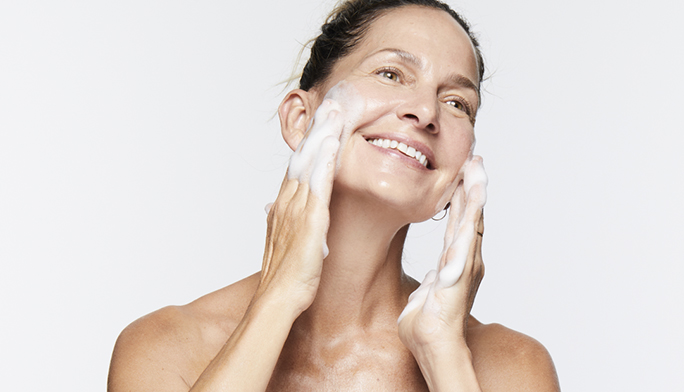
Fine Lines and Wrinkles
Commonly the first visible signs of skin’s aging that occurs due to the breakdown of collagen and elastin in the skin.
Hyperpigmentation
Patches of skin that become darker than the surrounding areas of skin. Examples are age spots, melasma, post-inflammatory trauma, and sun spots.
Loss of Firmness
Occurs when collagen and elastin production decreases. There are many causes for this such as aging, overexposure to the sun, and extreme weight loss.
Melanin
A natural pigment that gives humans color to the skin, hair, and eyes. UV rays activate melanin in the human body and it is the skin’s first defense because it absorbs UV. Melanin is responsible for tanning of skin exposed to sunlight.
Menopause
A natural process in which the female body starts producing less collagen and elastin as hormone levels decline, resulting in dryness and more pronounced signs of aging.
Pore
Small openings in the skin in which oil and sweat reach the surface from their glands.
Rosacea
A chronic inflammatory condition that causes reddened skin and a rash on the face.
Scars
A place on the skin where a wound healed but is still visible. Scarring can present on the skin surface raised or as a divot.
Sensitive
A reduced tolerance to the application of cosmetics and personal care products. Sensitive skin is more prone to reactions such as redness, itching and burning.

